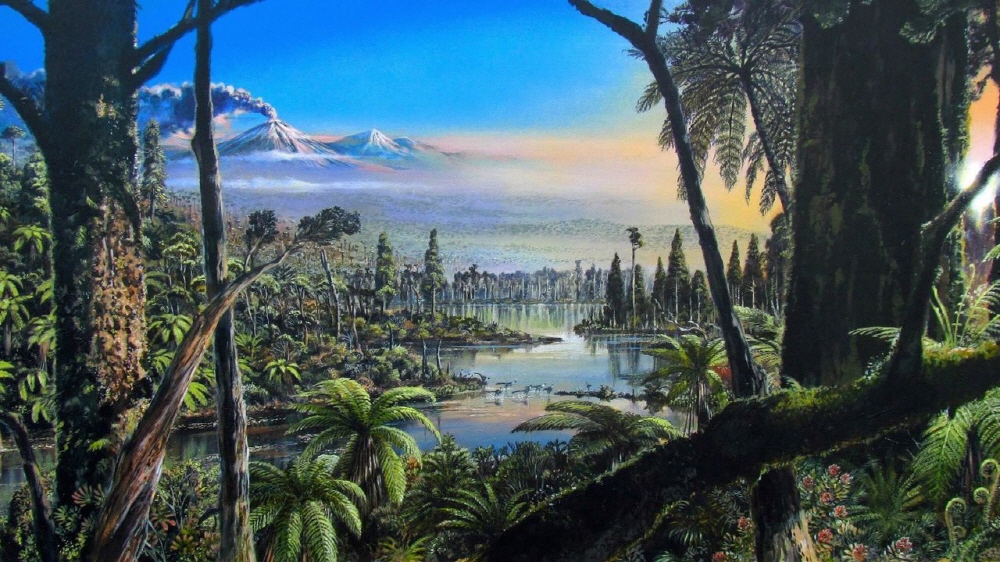
The Earth was in the Cretaceous Period 145 to 66 million years ago. It was a time when dinosaurs such as Tyrannosaurus existed. Not long ago, spores and roots were unearthed during this period. However, as a result of the research team’s analysis, it is said that in the Cretaceous period, a place not even 1,000 km from the Antarctic point was a dense jungle.
In the past, the Earth’s atmosphere had carbon dioxide concentrations several times higher than today, and the Cretaceous Earth was warmer. But so far, there has been no scientific record showing what Antarctica was like in the era of global warming. For this reason, I recently started a project to dig underground in Antarctica. As a result, pollen and spores were discovered 90 million years ago, just about 900 km from Antarctica. This is great. Even if observed from more than 10,000 km from Antarctica, the annual average temperature is -10 degrees Celsius. What is difficult for plants to live in. However, analysis of the unearthed fossils revealed that at the time, dozens of plant species were inhabited.
The research team used special undersea drilling equipment to do the work, but it is said that it is the first time that such a layer has been able to penetrate the Amundsen Strait in western Antarctica. It was thought that there was a possibility of going back to the Cretaceous from the old floor, but what to discover was unclear.
In 2017, the research team headed for the Amundsen Sea Valley at 73.54 degrees south latitude in western Antarctica on a research icebreaker. In this area, old sediments were hardened in the glacier, so they could hardly penetrate inside. For this reason, the underwater drilling equipment (MARUM-MeBo70) was used.
This machine is a portable remote-operated drilling rig capable of selling up to 80 m. However, while checking the surrounding area from a helicopter equipped with satellite imagery and equipment for icebergs interfering with drilling, the work was difficult, but fortunately, the spores and roots were excavated from a place about 30m below the sea level.
At least 62 kinds of plant pollen and spore fossil roots were identified as a result of an analysis such as CT scan using a sediment sample excavated with a drill. According to a paper published in the scientific journal Nature, these include conifers and ferns currently inhabiting the southern hemisphere. This drilling was conducted in the western sea of Antarctica, but the analysis of tectonic activity revealed that the crust exists at 82 degrees south latitude, which is closer to the Antarctic point, and is now part of the continent of Gilandia, which sank to the seabed. In addition, the excavated sediments and fossils were found to be 90 million years old.
In other words, this study found that there was a temperate rainforest 900 km from Antarctica during the Cretaceous Period. These temperate rainforests were warm, rainy jungles like the warm dow coniferous forests in parts of New Zealand and the Pacific Northwest of the United States. The research team explained that a surprising diversity was found in such latitudes.
The research team validated the climate model required for these plants to survive. Then, the average annual temperature was 13 degrees Celsius, and it was calculated that a climate and environment similar to that of Seattle is needed. For example, in the vicinity of Antarctica, maintaining this temperature for four months would be impossible without significant concentrations of carbon dioxide in the Earth’s atmosphere. Perhaps at the time, 1,120 ppm to 1,680 ppm were needed. For reference, the current concentration of carbon dioxide in the atmosphere is 415 ppm.
One expert said the most interesting thing about the paper was that ice did not exist in Antarctica during the Cretaceous Period. He warned that if humans continue to release carbon dioxide into the atmosphere without restrictions, the Earth may fall into the same situation again.
The current predictive model is estimated to have a concern that the concentration of carbon dioxide in the atmosphere will increase to 1,000 ppm by 2100. This will cause all of the Antarctic ice to melt, and there are warnings that the Earth may be in a greenhouse for millions of years. The research team revealed that if there was a temperate rainforest near Antarctica, it plans to continue to clarify what kind of climate the Cretaceous Earth would have been. Related information can be found here .


















Add comment